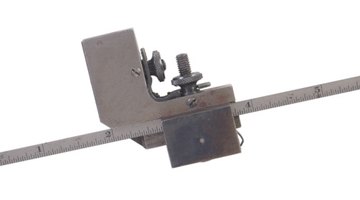How to Calibrate a Height Gauge
Height gauges are high precision instruments used to measure and check the height of manufactured parts. These gauges provide highly accurate readings and are fairly simple to use. The gauges do require recurring calibration that is typically performed at least once a year by an outside lab using standards that are traceable to National Institute of Standards and Technology (N.I.S.T). In-house calibration can also be performed if required, but should also involve using standards that are traceable to N.I.S.T.

Things You Will Need
- Calibrated gauge blocks
- Height gauge cleaner
-
Examine the height gauge for any obvious signs damage or wear which could affect the function of the gauge. Verify that the height gauge is in good working order.
-
Clean all parts of the height gauge including the gauge base, scribe tool, rails, and body.
-
Measure a 1” gauge block with the height gauge. Verify the measurement taken matches the specification on the gauge block. If the reading is incorrect, the gage is out of calibration and will need to be repaired.
-
Perform additional measurements with the gauge using random calibrated gauge blocks. Verify each measurement taken matches the specification on the gauge block. Measurements should be taken at random heights from the base to the gauge’s full height. If any measurement is incorrect, the gauge is out of calibration and will need to be repaired.
Tip
Calibrate your inspection and test equipment to traceable standards
References
Resources
Writer Bio
Jonathan Cadieux has been writing electronic and mechanical how-to articles since 2001. His work can be found online at various websites. He holds a degree in electro-mechanical engineering and has worked in the automation and electronics industry for over 20 years.
Photo Credits
- Hemera Technologies/PhotoObjects.net/Getty Images
- Hemera Technologies/PhotoObjects.net/Getty Images
More Articles



